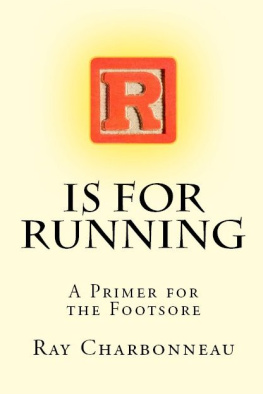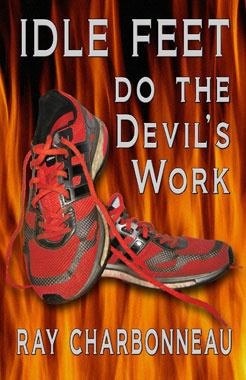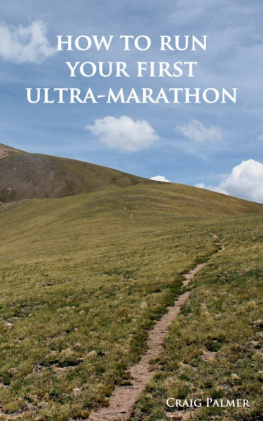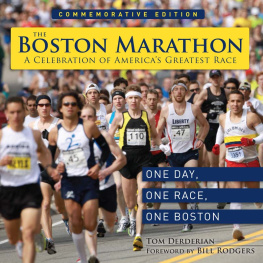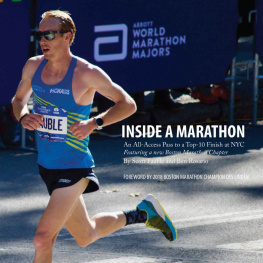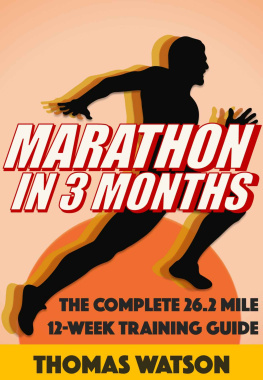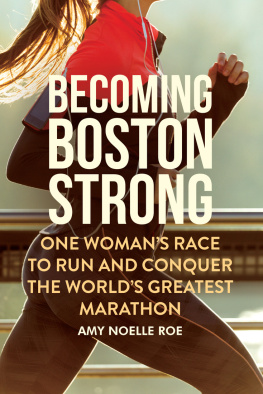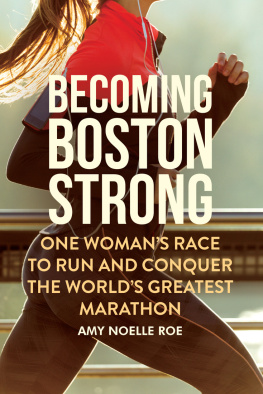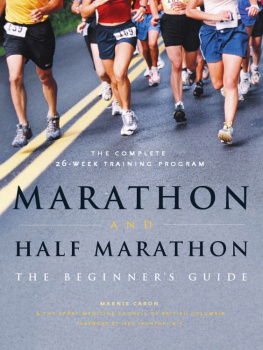Idle Feet
Do The
Devils Work
Ray Charbonneau
2014 by Ray Charbonneau
First Smashwords edition
ISBN: 9781310181153
Book design: Y42K Publishing Services:
http://www.y42k.com/bookproduction.html
Also by Ray Charbonneau:
Chasing the Runners High
Overthinking the Marathon
R is for Running
The 27th Mile (editor)
More info:
http://www.y42k.com/
To Ruth, always.
And to everyone else who reads or writes and runs.
Table of Contents
Introduction
When Im not running, the time off my feet leaves me with time on my hands. Ive spent much of that time coming up with the stuff that follows in this book.
My goal has always been to write about running in a way that you can't find elsewhere. There isnt a single speedy runner profile, 10 Steps to Your Fastest 5K, or Runners Miracle Diet article in here. Instead, youll find my favorite pieces from the assortment of dead-tree publications and landfill-saving online sites around the world thatve been kind enough to publish my writing.
Ive tried to explain why so many of us make running such a big part of our lives without ever losing sight of how silly it is for someone like me to spend so much of my time trying to get a little faster at moving from one point to another on foot. Theres some serious research, along with plenty of humor and the kind of lies that tell a truth that cant be told any other way.
Is that the devils work? Read on, and judge for yourself.
Early stuff
Left To My Own Devices
Heres my first running article, from 2002. I cringe to read it, and time has passed the content by (MiniDiscs?), but Ive included it as a benchmark of sorts and as a reminder of how quickly things change. And the music selection is a good indicator of my rapidly advancing age. (Running club newsletter, Jan/Feb 2002)
Many of us like to have music playing while we run. Music can be an energizer, a distraction from pain or tedium, a soundtrack to a heroic effort, or an end in of itself.
During some events, race organizers provide live performers along the course to supply the music. For most of us, as we go out for a typical run, thats not an option. Instead, we carry along a device to generate the sounds that help make each run a unique pleasure.
There are five basic types of portable music devices that a runner can choose from: radios, cassette players, CD players, MiniDisc players, or MP3 players. The average person might think about it for a few minutes before choosing one, or perhaps two, of the devices. However, as runners, we think nothing of tracking exactly how many miles weve run in a pair of shoes, or planning out a day-by-day training program geared towards a race a year away. Many of us are equally obsessed when choosing how we carry the music we bring on our runs (arent we?).
It may seem like overkill, but if you want to maximize your running pleasure, its worth having a plan. Otherwise, you might be like an under-pronater in motion-control shoes, always wondering why everyone else actually seems to enjoy what theyre doing.
Sound quality is one important factor when choosing a device. The limiting factor for sound quality for any of these devices is usually the headphones you use for listening, since none of the lightweight headphones you might use while running provide the quality of sound youd get from any decent home audio system, no matter what the source is. This limitation reduces the differences you might otherwise hear, meaning that this category gets less weight that it otherwise might. Still, CD players, and MP3 or MiniDisc players (if the music was recorded properly), sound noticeably better than radios or cassette players.
The other factors involved in your choice include suitability to running (portability and stability), choice of music available, cost, and complexity.
Radios are small, cheap, and simple to use. They dont skip, though you may have problems with static if youre listening to a distant station or one with a weak signal. There are a wide variety of stations to choose from, especially in an urban area such as Boston. The stations make distinctly different types of programming available, from news or other spoken word shows to all types of music. All of this is freely available. Since most radio stations do business by striving for as large an audience as possible, thereby driving up ad rates, the most popular music is always around somewhere.
Radio is a good choice for many people. But if you dont like whats popular, or if inane commercials and DJs drive you crazy, youll want to use a device where you have more control over the programming.
Almost anything you want to listen to is available on CD. If you have a computer, you can even create your own CDs from other source material. However, CDs and CD players are larger than your other choices. More importantly, unless you buy a high quality player and are a very steady (euphemism for slow) runner, most youll likely find that CD players skip too much to be useful while running.
So if you want control over what you listen to, youve got three choices: cassettes, MiniDiscs, or MP3s.
Cassettes are the tried-and-true choice. Cheap and easy to use, they dont skip, and its easy to find popular music on tape in stores, or create your own tapes from your home music collection.
However, since tape is inherently sequential, songs on a cassette are always played in the same order. Extremes of heat and cold cause more problems with cassettes. And if you go on longer runs, cassette players use up batteries faster, and cassette tapes are bulkier, so cassette players are less suitable than your other choices.
MiniDiscs are smaller, play longer on a battery and sound better than cassettes, and theyre just about as easy to use. Songs on a disc can be played in random order.
But MiniDiscs are less popular, so you will almost certainly have to record your own discs. The discs themselves are more expensive. And while you can run with them, MiniDisc players do skip from time to time.
MP3 players that are suitable for runners use solid-state memory to store the music. This storage is totally shock-resistant, so these players are entirely skip-free. (MP3 jukeboxes can store huge amounts of music on an internal hard disk. Unfortunately, these disks skip as much as CDs, making them unsuitable for most runners.)
Basic MP3 players cost more than other types of devices, and require a computer to use. This makes it more expensive to get started. However, when you want to change the music in your player, you just erase the memory and reload. This means you never have to pay for new media, but it does make changing music more complex. And since you cant store music on external media, you have a fixed limit to how much music you can carry at one time (though you can add extra memory to most players). You can store more music in the same amount of memory if you are willing to sacrifice sound quality.
Once youve chosen a device, the next step is to choose the music you want to carry along with you. If you are blessed with the ability to tolerate the music played on the radio, this part of the process is easy. However, if you have any taste, sooner or later youll get tired of radio and want to choose your own music.
When choosing music, its important to listen to experts. For example, I own a significant number of records, as shown here:
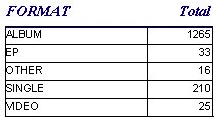
What this shows is that I am the worlds leading expert, with significant time and money invested, on figuring out the type of music that I like. Tastes varyif they didnt, wed all be happy with radio.
Next page

